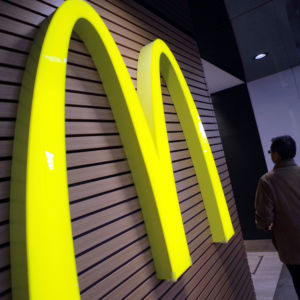More and more restaurants have been looking towards automating their services, and Nextep Systems is one of the leading companies behind the idea.
Nextep began about eleven years ago by producing some of the first self-service kiosks. Now, early-adopting fast-food restaurants and stores use the technology, and more will be looking to come online soon. Improved technologies and lower costs, plus a reduced regulatory burden, make the concept an attractive idea for businesses.
“The purpose was basically to consume the queue lines, specifically at quick service restaurants and fast casual restaurants,” Nextep Marketing Vice President Chuck Wheeler told InsideSources. “During peak hours they would just be inundated with lunch goers and dinner goers.”
Nextep has provided services to local Subway restaurants, Au Bon Pain, Zoup and BurgerFi, among other establishments. Nextep was aiming to decrease lines and backlogs at stores, but as a result, their system offered increased profits for companies that could then serve more customers in a shorter period of time.
“So we devised a system that would take orders at a very rapid pace and at high levels of precision,” Wheeler noted “We basically would eliminate the lines that existed and the net result of that was boosting their revenue 35 plus percent.”
Economists have found automation is a natural course of action as the economy continues to evolve. The question is whether regulations and minimum wages increase the rate in which automation happens. The White House Council of Economic Advisers detailed in a report Feb. 22 that technological innovations like automation are on the rise.
“At the National Restaurant Association show in May, we heard a lot of restaurants, and a lot of systems, came to our booth with concerns about rising labor costs and high turnover,” Wheeler went on to say. “And they just don’t know without automation, without technology, how they’ll solve these problems.”
McDonald’s, Wendy’s and other large franchises have also started to automate their services. Their operations tend to be large enough that they can to do so internally. Nevertheless, Nextep has seen growing interest in recent years as more companies look to automation.
“We’re talking to everyone,” Wheeler stated. “Everyone who is interested in finding out more about automation, we have some sort of conversation going on with them.”
Economists have attributed the increase in automation to a couple main factors. Some see this has a natural progression for businesses while others blame regulatory burdens like the minimum wage. Wheeler believes its more a natural process as technology improves and becomes more cost effective for businesses.
“I’d say the biggest contributor is the cost and capacity of this technology to businesses,” Wheeler said. “Its also something they see other industries taking advantage of and they know they have to do that as well.”
Nevertheless, Wheeler notes regulatory burdens could still be a factor for businesses deciding on whether to automate.
“Obviously these companies see a massive burden coming down the pipe with minimum wage increases and if they think that’s one of the things they can automate their way out of, they probably will,” Wheeler also stated. “I think its a business decision they will make like any other business.”
Wheeler adds that automation is not about replacing workers but rather increasing the capacity of customers that businesses can serve. Essentially businesses are able to overcome increased operating costs not by reducing their workforce but rather by making more revenue.
“We have not encountered an elimination of labor with our systems, its more reallocation of labor.” Wheeler said. “Your making this extra revenue, that offsets your rising labor costs.”
Nevertheless there is still plenty of concern workers are being replaced with machines. The Oxford Martin School and Citi found that an average of 57 percent of workers across the globe could be replaced by automation. The Brookings Institution found rising minimum wages make automation more cost-effective.
“There is a lot of hyperbole about the elimination of $15 an hour jobs,” Wheeler noted. “We just don’t see that being a practical end to what we’re doing.”
Companies automating their services is nothing new but the trend has increased rapidly in recent years. General Motors was the first company in the country to utilize robots for production in 1961. Automation has been primarily used in industrial occupations but now the service industry among others have begun exploring it as well.

